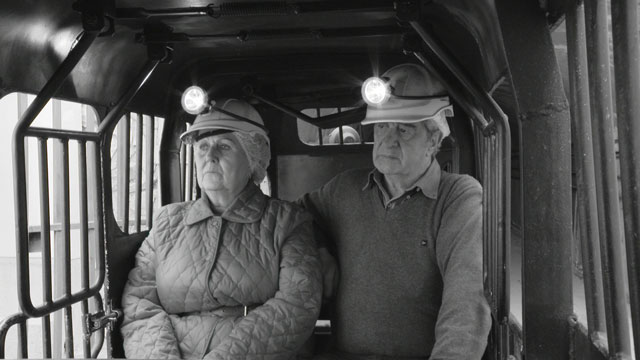Continued from part 1.
Creating a "hybrid" form
It is important to state that it was not the aim of Pablo’s Winter to create controversy about the dividing line between documentary and fiction. Rather, the objective was to ignore that line altogether and explore freely aspects of both approaches. My only concern was an ethical one. My standpoint is close to the documentary ethics in the sense that the characters and the world presented in the film should be as close as possible a representation of the characters and the world observed in reality. Beyond that ethical concern, I did not bother too much about making a documentary or a fiction film. I rather saw myself as if I were a sculptor modelling the outside reality. However, the film had to be defined at some point.
I always presented Pablo’s Winter as a fiction film due to the large control that I had planned for the narrative arch and the situations depicted. But that was mainly because I was not fully aware at the time of some contemporary trends of factual and documentary films, something that I came to appreciate during my post-production research. There is a factual film trend that it could be defined as the ‘what if’ documentary (Thomas, Steve, Whatever Happened to the Social Documentary? In Imagining Reality, Ed. Mark Cousins and Kevin Macdonald, Faber and Faber Limited, London 2006).
This is common on reality TV where sometimes content is generated by applying this ‘what if’ to certain characters or situations. For instance, what if the managers of a restaurant would have to work for a whole week in the kitchen instead than in the office? (Back to the Floor) What could we learn about them and the human condition? What if we took some celebrities to a deserted island and make them struggle for a whole month? The what if is a provoked situation, a ‘precipitating incident’, a created reality. Once is created, there is no need to fictionalize what the celebrities in the islands or the manager in the kitchen will do; we just need to step back and observe how reality unfolds under the new condition.
Pablo’s Winter can perhaps be seen as one of those ‘what if’ documentaries. What if we ask a very hard smoker to give up cigarettes, his life companions? Can we end up learning something more universal and deep than the obvious conflict of a man trying to quit smoking? I devised that reality, that ‘what if’. Subsequently, I looked for the right character that in turn accepted this ‘what if’ as the film reality, not necessarily as his everyday reality. Once that happened, we mostly stood back and observed.

There is another device to create content for the film, which is closer to the fiction realm. It could be understood as a variation of the ‘what if’, since that is very much the way an improvisation is set up. The difference is that while the ‘what if’ creates a macro reality for the whole film to live in, to happen, the improvised scenes aimed at dramatising an everyday life situation, creating scenes in a fashion closer to the fiction film. For an improvisation scene to evolve successfully, the characters have to accept a reality for the scene and a goal or objective, which is usually in conflict with the other characters'. The rest is up to their imagination.
This improvisation approach was mainly used to make sure that we captured some dramatic moments within a real and unique event, for instance, at the bonfire. The bonfire depicted in the film is a local tradition that happens once a year. I wanted the scene to be more than the couple just attending the event: it had to be about them, not about the bonfire. I was interested in the combination of a real event with an improvised drama scene, as if it were an artistic intervention in a real setting. It was not a question of fictionalising for the sake of it; rather it was a way of exporting the observed dynamics of the couple into an environment very difficult to control. This technique is used several times in the film, and I believe that the ‘what if’ approach and the combination of improvised drama within real events is one of the most prominent formal experiments in the film. Moreover, they have become very useful techniques in the creation of content for this project.
Last, as always for me, was the question of the story of the film. I needed to find a very simple one that could help me to explore the everyday life of the village and the mundane. I spent six months working on a detailed treatment for a film set in the local male hairdressers that I ended up scrapping before moving to the current storyline. An average man, an average village and an average conflict is what I wanted to base the film on. The film I aimed to make tried to focus on the “currents” going underneath that superficial story. In the same way that the mine in Almadén runs underneath the village, I wanted the film to use the conflict of smoking to talk about something else: about the end of an era, about a world that disappears. This has been the more difficult objective to carry through the whole process and I kept revising it often, as it tended to dissolve in the cutting room.





.jpg?1383830385)
